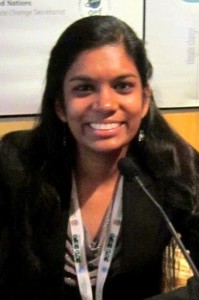
Today, the Green Climate Fund (GCF) meets for its 5th board meeting in Paris, France. Established by the United Nations Framework Convention on Climate Change (UNFCCC) in 2010, the GCF promised to be the main vehicle for channeling billions of dollars pledged by developed counties to support climate mitigation and adaptation activities in developing countries. But after nearly three years, the Fund’s Board is still negotiating its basic rules and procedures, and it hasn’t received the money needed to make this climate fund a reality.
Over the last year, the Board has worked on the GCF’s “Business Model Framework” which is supposed to establish the structures needed to make money flow through the Fund. Questions that remain under discussion include: What are the objectives, goals, and results of the GCF? What kind of activities will it fund? How will national priorities for climate action be reflected in funding decisions? Which entities can access finance? What kinds of financial instruments (such as grants) will the GCF use? How will the GCF be structured? There has been some movement on these issues, but the process has raised many more questions than it has answered so far.
The main question on everyone’s mind is whether the GCF will actually have money to disburse. Developed countries are unwilling to mobilize money until the Fund’s governance structure is in place, but this is taking much longer than expected. Developing countries are beginning to wonder if the delays in agreeing to a structure are an excuse for not moving money into the Fund. The Paris meeting will test whether the Board can balance the need for a coherent governance structure with the urgent need for climate finance. Despite these challenges, the GCF still stands to be the main multilateral fund for climate finance.
Recognizing the GCF as a major opportunity for addressing climate change, CIEL has been closely tracking and engaging in two issues: safeguards to protect people and the environment and civil society participation. On the safeguards front, we are working to ensure that in providing climate finance, the GCF doesn’t end up threatening people’s rights, including the right to a healthy environment. It might sound counter-intuitive, but without strong social and environmental safeguards, climate mitigation and adaption schemes can have negative impacts on affected communities. There are several obvious cases of this, like the Barro Blanco hydroelectric dam in Panama, a project registered under the Clean Development Mechanism in which the company inadequately evaluated the project’s impacts and did not meaningfully consult the indigenous Ngӓbe peoples affected by the project. Thanks to effective advocacy by civil society at the last Board meeting in Songdo, South Korea, the Board agreed that environmental and social safeguards need to be considered when deciding which entities will be able to access the GCF. In Paris, we will push for more detailed protections as the Board elaborates criteria for accessing the funds.
Conditions for robust public participation in the process have, unfortunately, been sorely lacking at the GCF thus far. Contrary to calls for transparency, the meetings primarily take place behind closed doors, with most of civil society watching on a closed circuit television in an “overflow room.” To make matters worse, the Board decided not to provide live webcasts, which would have allowed civil society and Board advisors who cannot afford to travel to every meeting the ability to observe the meetings. Certain developed country Board members thought the cost of webcasting was too high, which is ironic given that it would significantly reduce the carbon footprint of the GCF if people could observe from afar. Because broad participation is essential for the legitimacy of the Fund, these issues will be revisited in Paris.
The many unresolved questions at the GCF and the limited availability of information as to its processes gives the impression that the Fund is not making much progress, especially compared to the urgency needed to address the climate crisis. But finding the sweet spot between climate and development is critical in order to enable create a just and sustainable society, and such an ambitious structure takes time. With strong social and environmental safeguards in place, adaptation and mitigation projects financed by the GFC have the potential to promote development and the full enjoyment of human rights while working to steer our planet away from a path to destruction.
Originally posted on October 8, 2013.
